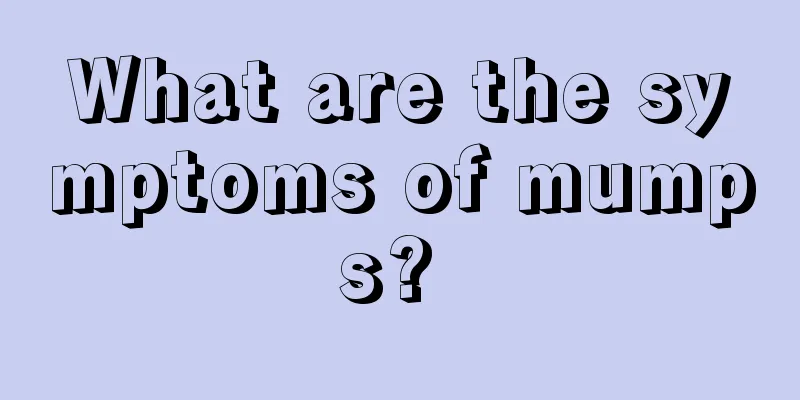What are the symptoms of mumps?

|
Children will face greater threats in terms of health because their resistance is not fully developed and they are unable to respond effectively to external viral attacks and thus become ill. For example, mumps is a common disease that has a great impact on children’s health. Let’s take a look at the classifications of mumps symptoms. 1. Suppurative parotitis It is usually unilateral and bilateral involvement is rare. In the early stages of inflammation, symptoms are mild or not obvious, with slight pain, swelling, and tenderness in the parotid area. The catheter opening is slightly red, swollen and painful. As the disease progresses, fever, chills, and unilateral parotid pain and swelling may occur. The parotid gland and the surface skin are locally red, swollen, hot and painful. When the lesion enters the purulent stage, pus can be seen flowing out of the duct opening when squeezing the parotid gland. 2. Mumps The most common viral mumps is epidemic parotitis. Mumps is an infectious disease. The sources of infection are patients and asymptomatic carriers, and the routes of transmission are respiratory droplets and close contact. The clinical onset is acute, often with prodromal symptoms such as fever, headache, and poor appetite. After a few hours to 1 to 2 days, the body temperature may rise to above 39°C, and the salivary glands will swell. The parotid gland is most commonly affected. The swelling is generally centered on the earlobe, spreading forward, backward, and downward, with unclear edges and mild tenderness. The pain is aggravated by chewing with the mouth open and eating acidic foods. The local skin becomes hot, tense, and shiny but not red. Usually, the contralateral side is affected 2 to 4 days after the swelling of one parotid gland. The submandibular gland or sublingual gland may also be affected. When the sublingual gland is enlarged, swelling of the tongue and neck may be seen, and difficulty in swallowing may occur. The parotid duct opening may be red and swollen in the early stages, which helps with diagnosis. Atypical cases may not have parotid gland swelling at all, but may present with symptoms of simple orchitis or meningoencephalitis. There are also cases where only submandibular gland or sublingual gland swelling is seen. 3. Autoimmune mumps It is more common in chronic autoimmune diseases, such as Sjögren's syndrome, IgG4-related diseases, etc. In addition to recurrent parotid gland enlargement, other glands, joints, and organs are also involved and damaged. |
<<: What's wrong with yellow discharge from ears due to eczema
>>: What diseases are neuralgia a symptom of?
Recommend
What causes homosexuality? These factors should be prevented
Homosexuality is becoming more and more common no...
Early bladder cancer cure rate
For diseases that endanger the patient's life...
How long can you survive after lung cancer bone metastasis? Determined by many factors
After lung cancer metastasizes to the bone, there...
Is endometrial cancer contagious?
Endometrial cancer is one of the common gynecolog...
What are the magical uses of vinegar eggs
In traditional Chinese medicine, vinegar and eggs...
What is the difference between enteroscopy and colonoscopy?
In clinical practice, people often experience sym...
Why do I walk crookedly to one side?
Normally, everyone can walk in a straight line, b...
How to remove oil stains from clothes
It is difficult for people to avoid contact with ...
What can I do to make my white hair black
Having white hair is a normal phenomenon for the ...
Can stomach cancer be cured?
Gastric cancer is a common malignant tumor of the...
How much does radiotherapy for rectal cancer cost
Rectal cancer refers to cancer located between th...
Apple and dragon fruit yogurt
Apple and pitaya yogurt can be put together to ma...
How is hepatocellular carcinoma graded? It is divided into three stages
How is hepatocellular carcinoma graded? Hepatocel...
What to do if you lack oxygen
Many people have experienced hypoxia, which is ce...
What foods can make your hair darker?
It is not uncommon for people to have symptoms of...









